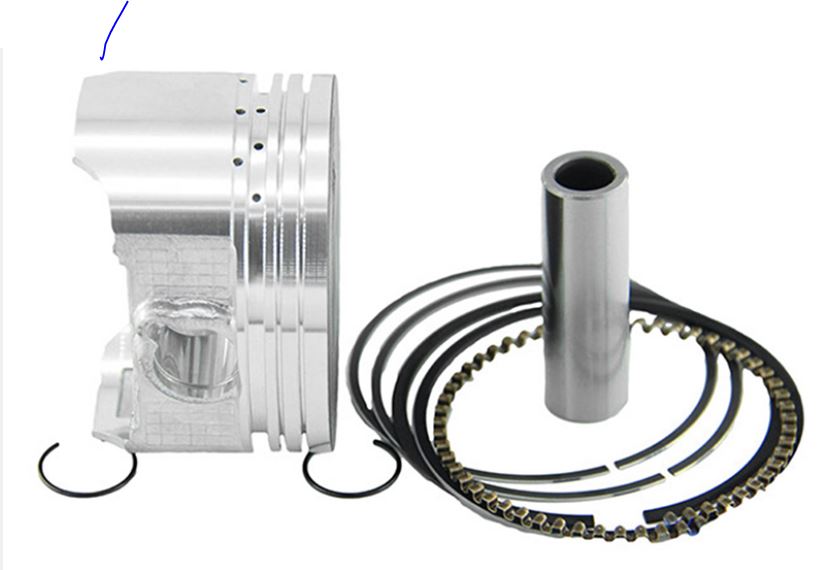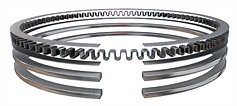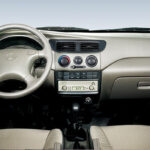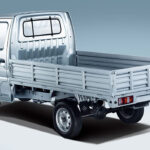Understanding Engine Piston Rings and How to Maintain Them
Engine piston rings are crucial parts of your car’s engine, helping it run smoothly and efficiently. These small yet vital components are responsible for sealing the combustion chamber, regulating oil consumption, and transferring heat. They help reduce friction, prevent gas leaks, and ensure the engine operates at its best. In this blog, we’ll explore the functions of piston rings, their types, materials, and how to take care of them to keep your engine in top shape.
What is an Engine Piston Ring?
An engine piston ring is a set of rings that fit around the piston inside an internal combustion engine. These rings perform several important tasks such as sealing the combustion chamber, controlling oil flow, and helping the engine transfer heat. Proper functioning of the piston rings is crucial for maintaining the efficiency and lifespan of the engine.
Functions of Engine Piston Rings
-
Sealing the Combustion Chamber: Piston rings create a tight seal between the piston and the cylinder walls. This prevents gases from escaping during combustion, ensuring maximum engine power.
-
Regulating Oil Consumption: Piston rings help control how much oil reaches the combustion chamber, reducing oil consumption and keeping the engine lubricated.
-
Heat Transfer: The piston rings help transfer heat from the piston to the cylinder walls. This prevents overheating, which can cause engine damage.
-
Reducing Friction: Piston rings reduce the friction between the piston and the cylinder walls, which lowers wear and tear, improving engine performance and longevity.
Types of Engine Piston Rings
There are three main types of piston rings, each with a specific role:
-
Compression Rings: These rings ensure a gas-tight seal, helping to prevent gas from escaping during combustion. They are crucial for maintaining engine power and efficiency.
-
Oil Control Rings: These rings regulate the amount of oil that reaches the combustion chamber, preventing too much oil from burning up during operation.
-
Wiper Rings: Also known as scraper rings, these help remove excess oil from the cylinder walls and maintain proper lubrication throughout the engine.
Materials Used for Engine Piston Rings
Piston rings are made from high-quality materials that can withstand the high temperatures and pressures inside the engine. Some of the most common materials include:
-
Cast Iron: Known for its excellent wear resistance and durability, cast iron is commonly used for piston rings.
-
Steel Alloys: These are used in high-performance engines due to their strength and ability to resist deformation under extreme conditions.
-
Molybdenum-Coated Rings: These rings have a special coating that provides enhanced lubrication and heat resistance, improving the durability of the rings.
-
Chrome-Plated Rings: Chrome plating helps reduce friction and wear, increasing the lifespan of the rings and improving engine performance.
Understanding Piston Ring Gaps
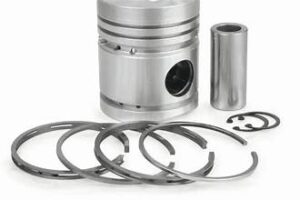
Piston ring gaps refer to the small space between the ends of the piston rings when they are installed. This gap is important because it allows for thermal expansion as the engine heats up. If the gap is too small, the rings may seize inside the cylinder, causing damage. If the gap is too large, it can lead to gas leakage, reducing the engine’s performance. It’s essential to keep the piston ring gaps within the manufacturer’s recommended tolerances.
How to Maintain Engine Piston Rings for Better Performance
To ensure your engine runs smoothly, proper maintenance of the piston rings is crucial. Here are some tips to keep them in good condition:
-
Regular Oil Changes: Always use high-quality engine oil and change it regularly. Clean oil helps reduce friction, prevent carbon buildup, and protect the piston rings from wear.
-
Periodic Inspections: Regularly check for signs of wear, scoring, or excessive oil consumption. This can help detect potential problems early, preventing costly repairs.
-
Proper Installation: When installing piston rings, make sure their gaps are within the manufacturer’s specifications. Incorrect installation can lead to poor engine performance.
-
Engine Protection: Consider using protective services like 3M Glass Coating and undercoating, which can help keep your engine components safe from environmental damage.
When to Replace Engine Piston Rings
You might need to replace your piston rings if you notice any of the following signs:
-
Loss of Engine Power: If your engine is struggling to perform, it could be due to worn-out piston rings not sealing the combustion chamber properly.
-
Excessive Oil Consumption: If your engine is burning too much oil, or if you see blue smoke coming from the exhaust, it could be a sign that your piston rings are faulty.
-
Decreased Compression: Difficulty starting the engine or a drop in engine power could indicate that your piston rings are worn, leading to decreased compression.
-
Engine Knocking: Unusual knocking or tapping noises from the engine may suggest piston ring issues.
Expert Assistance for Engine Maintenance
If you suspect any problems with your piston rings, it’s best to consult a professional. Schedule a maintenance check to ensure your engine is operating smoothly and efficiently. Regular maintenance is key to prolonging the life of your engine and avoiding costly repairs.
Conclusion
Engine piston rings play a vital role in ensuring your vehicle’s engine runs smoothly and efficiently. By understanding their functions, types, and the importance of proper maintenance, you can help extend the life of your engine and enhance its performance. Regular oil changes, periodic inspections, and using high-quality engine protection services are all essential to keeping your engine in peak condition.
If you’re looking for a reliable vehicle with excellent engine performance, consider exploring options like the Changan Deepal S07 here, or the Karvaan MPV Plus 12MPFI here. For a more luxurious ride, check out the Changan Oshan X7 Comfort here.
Also, if your vehicle’s battery needs an upgrade, you can find more information on new batteries here. Proper care and regular maintenance will ensure your engine stays in top shape for years to come.

